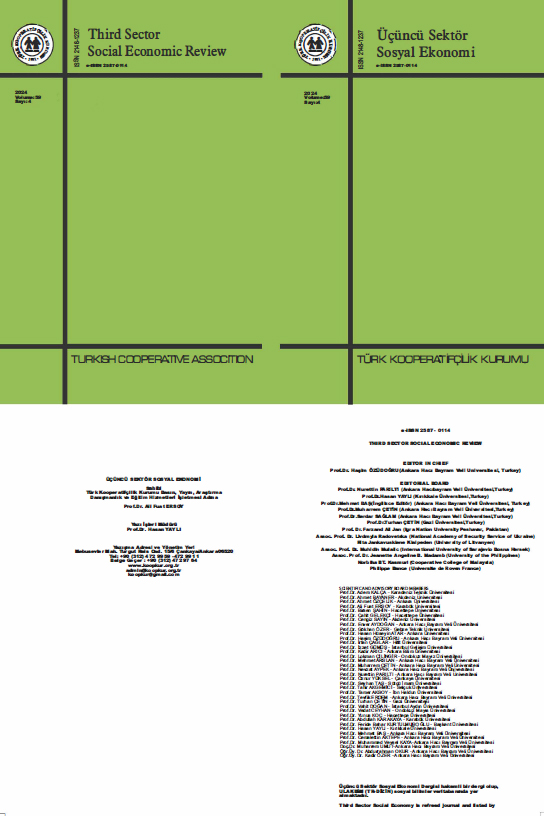Yıl: 2024 Cilt: 59 Sayı: 2 Sayfa: 694-707
doi: 10.15659/3.sektor-sosyal-ekonomi.24.04.2352
ZORUNLULUK VE FIRSAT İKİLEMİNDE ENFORMEL SEKTÖRÜN DEĞİŞEN YAPISINI YENİDEN DÜŞÜNMEK
AHMET ERTAN ÇÖLGEÇEN
Enformel sektör ve enformel ekonomiye yönelik ilk çalışmalar gelişmekte olan ülkelerde küçük ölçekli ve düşük verimli işletmelerin yaygınlaşmasıyla 1950’lerin başında akademik düzeyde araştırma gündemine girdi. Bu yıllarda enformel sektör, modernleşme eksikliğini yansıtan geçici ve marjinal bir ekonomik faaliyet olarak nitelendirildi. O tarihten bu yana enformelleşme, daha geniş bir olgu yelpazesini kapsayacak şekilde ekonomi, istihdam ve kurumlar düzeyinde gelişti. 1970’lerden itibaren neoliberalizm ve küreselleşmenin etkisiyle birçok gelişmekte olan ülke ekonomisinin temel bir özelliği haline dönüştü. 1993 yılında enformel sektörün, 2003 yılında da enformel istihdamın Uluslararası Çalışma Örgütü (ILO) tarafından tanımlanması sonucu enformel faaliyetlerin yasadışı veya yeraltı ekonomisiyle olan sınırları kesin hatlarıyla çizildi. Günümüzde enformel sektör, dünya genelinde istihdam edilen nüfusun yaklaşık yüzde 60'ını ve düşük ve orta gelirli ülkelerdeki ekonomik faaliyetlerin yaklaşık üçte birini oluşturan küresel çapta yaygın bir olgu haline dönüştü. Bu makale, enformel sektör kavramının gelişimini, ölçüm zorluklarını, ana etkenlerini, politika sonuçlarını ve formel sektörle olan ilişkisini genel bir bakış açısı çerçevesinde sunmayı amaçlamaktadır. Bu kapsamda enformel ekonomiye yönelik genel yaklaşımlar aktarılarak 1950’li yıllardan günümüze enformel sektöre yönelik tanımlamalar geriye dönük bir perspektiften incelenecektir.
Anahtar Kelimeler (Keywords): Enformel Sektör, Ekonomik Düalizm, Merkez-Çevre İlişkisi, Girişimcilik, Maliyet-Fayda Analizi
RETHINKING THE CHANGING STRUCTURE OF THE INFORMAL SECTOR IN THE DILEMMA OF NECESSITY AND OPPORTUNITY
The first studies on the informal sector and the informal economy entered the academic research agenda in the early 1950s with the proliferation of small-scale and low-productivity enterprises in developing countries. In those years, the informal sector was characterized as a temporary and marginal economic activity reflecting a lack of modernization. Since then, informalization has evolved to encompass a wider range of phenomena at the level of the economy, employment and institutions. Since the 1970s, under the influence of neoliberalism and globalization, it has become a fundamental feature of the economies of many developing countries. In 1993, the International Labour Organization (ILO) defined the informal sector, and in 2003, informal employment, and the boundaries between informal activities and the illegal or underground economy were clearly demarcated. Today, the informal sector has become a globally pervasive phenomenon, accounting for about 60 percent of the employed population worldwide and about one-third of economic activity in low- and middle-income countries. This paper aims to provide an overview of the development of the informal sector concept, measurement challenges, main drivers, policy implications and its relationship with the formal sector. In this context, general approaches to the informal economy will be presented and definitions of the informal sector since the 1950s will be analyzed from a retrospective perspective.
Anahtar Kelimeler (Keywords): Informal Sector, Economic Dualism, Centre-Environment Relationship, Entrepreneurship, Cost-Benefit Analysis
Tam Metin 507











